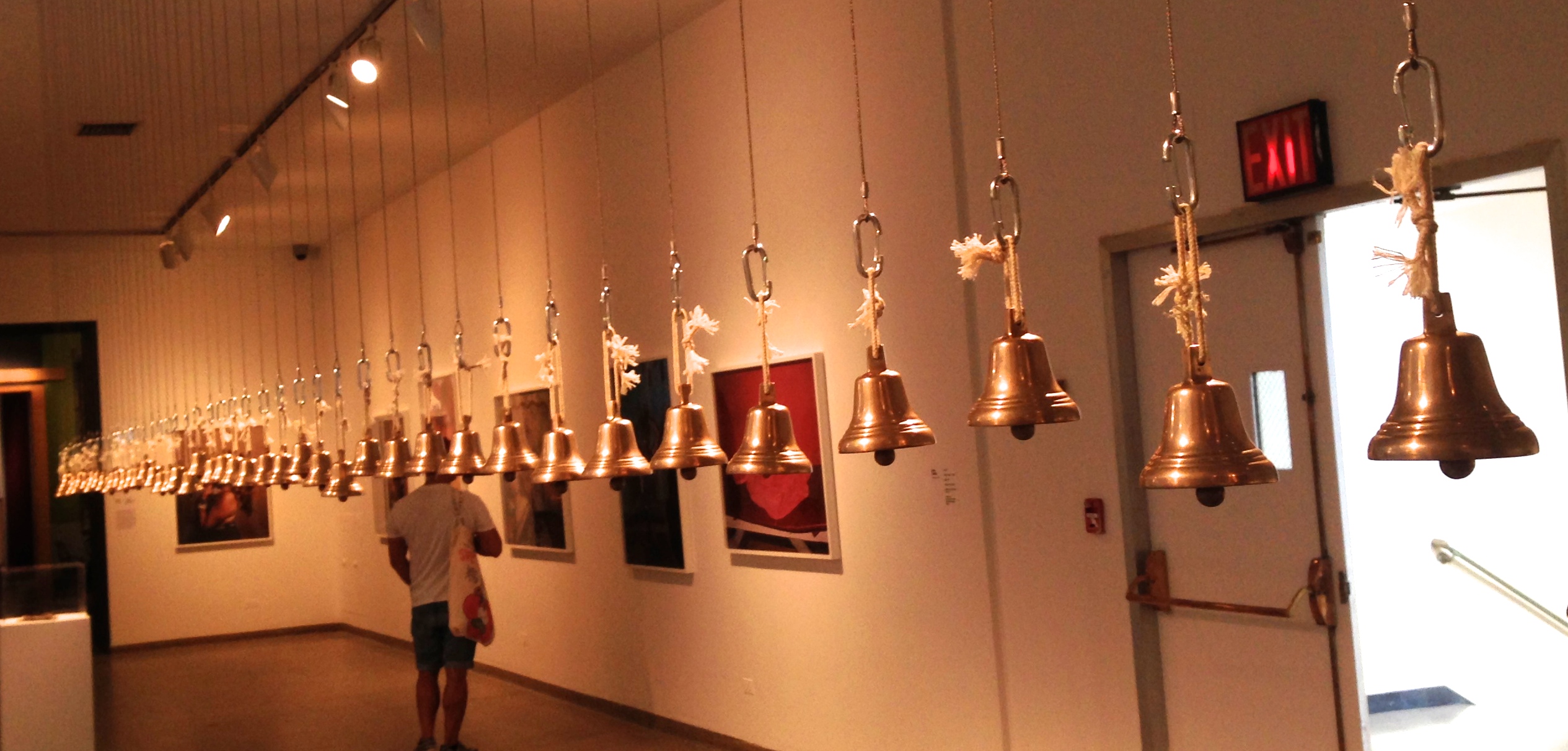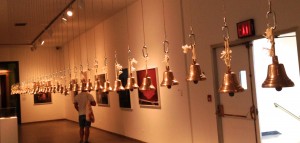Let Us Have Our Own Noon by David Horvitz is an installation of 47 bronze bells hanging in a row from the ceiling, when I saw the piece it featured two signed underneath that read,” do not touch.” I found this interesting as a bells purpose is to make sound and rather they appeared to be held captive form making sound. Their silence was almost deafening. This piece provided some history; in the late nineteenth century every town in the US kept it own time, with the advent of railroads the time zones were required, and in 1918 standard time became the law. The title for this piece was taken directly from a protest pamphlet from this time period. The 47 bells are made from a French church bell dating from 1742 that Horvitz melted down. Periodically, the bells are used in a performance where the 47 participants, beginning at local noon, each ring one of the bells as a group then disperse while continuing to ring the bells alone. Hornist describes the piece as “Giving everyone their own noon,” alludes to a past when time was measured idiosyncratically and communally rather than the demands of industry. (info taken from wall label)
This symbolism for time can be seen in other works of Horvitz aswell. Recently the artist had a display in Los Angeles at Blum & Poe, by going to his website I found his description,” I exhibited a row of glass vessels positioned on the floor of the gallery in an exact north-south line. Each vessel contained water from the Pacific Ocean that I collected by sailing to the longitude line that divides the Pacific time zone and the Alaska time zone, 127.5 degrees west of Greenwich, England. I wanted to materialize this imaginary line that determines spatial and temporal coordination, and to displace it by some 400 nautical miles. I imagined the line existing in neither zone, being outside of standardized time. The title I gave to the piece is somewhere in between the jurisdiction of time. The vessels are small enough to fit into your hand, so you can hold them—rather than the line holding you.” This representation of time in small objects is an interesting concept that I believe defines this artist.

